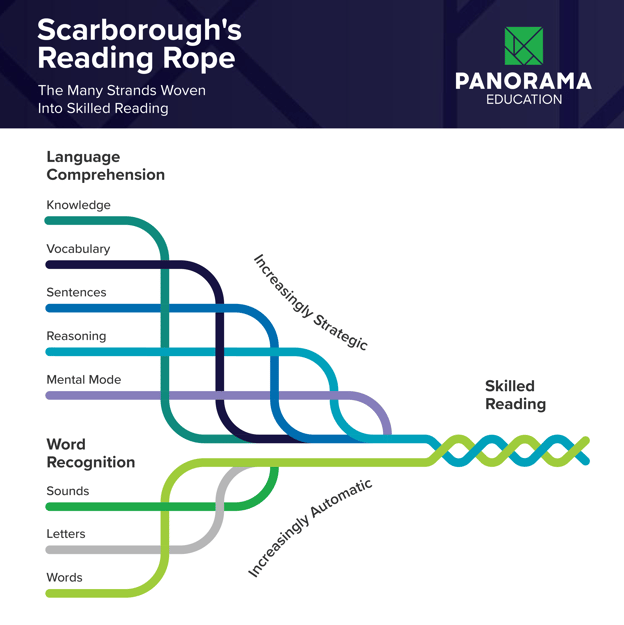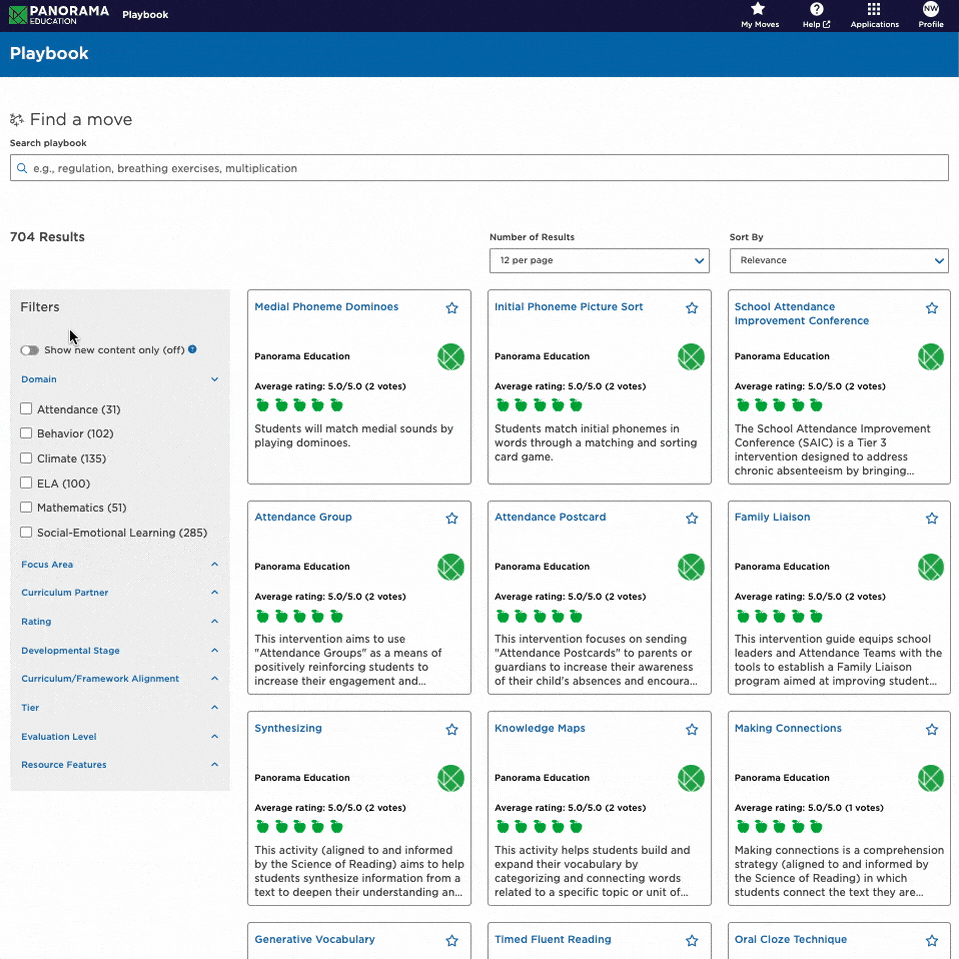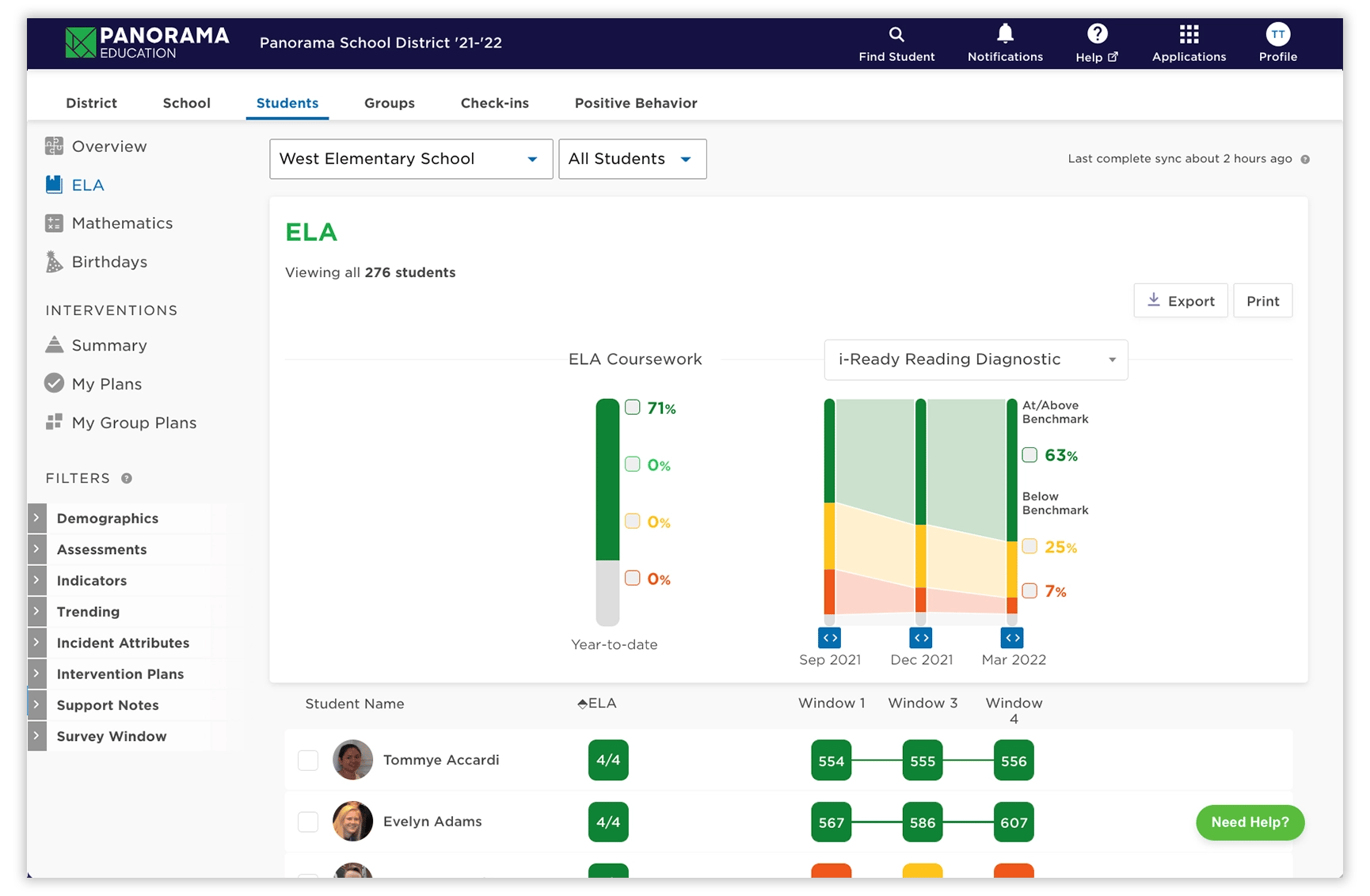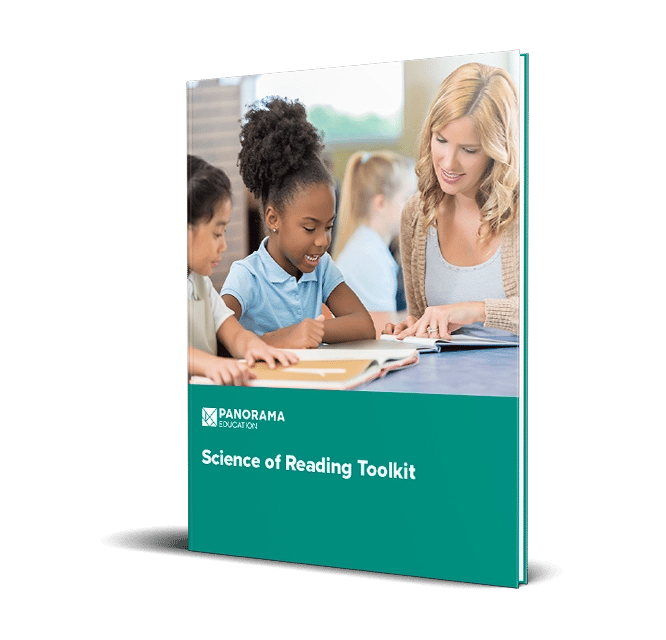In education, early literacy stands as a crucial foundation for lifelong learning. As the early years of a child’s life lay the groundwork for future reading and writing skills, investing in early literacy not only prepares a child for school, but also provides a foundation for their long-term pursuit of knowledge.
Research shows that as formal education begins, 37% of children arrive at kindergarten without the fundamental skills needed for a lifetime of learning. This statistic points to inequities before the traditional education journey even begins. Success isn't just built when school starts; it's established in those early years of language exposure and literacy experiences. This underlines the critical role of early literacy in closing gaps and cultivating eager learners for the journey ahead.
Additionally, with nationwide declines in literacy and math scores, especially those among students in grades 4 and 8, students are in need of consistent, high-quality reading and writing interventions. Whereas an MTSS (multi-tiered system of supports) forms the foundation for academic success once a student enters a district, it’s early literacy skills that will help set them up for long-term success. In this blog, we’ll provide an overview of early literacy skills and their importance in a student's development for long-term learning success.
Table of Contents:
- What is Early Literacy?
- How Do Early Literacy Skills Link to the Science of Reading?
- Creating a Literacy-Rich Classroom Environment
- Assessment and Monitoring of Early Literacy Skills
- Engaging Families in Early Literacy Development
- Supporting Early Literacy: Next Steps for District Leaders
|
Key Takeaways: Foundation for Lifelong Learning: Early literacy is crucial for a child's future academic success and lifelong learning. Developing literacy skills early on prepares children for school and provides a strong foundation for their ongoing education. Significant Early Literacy Gap: Research indicates that 37% of children start kindergarten without the fundamental literacy skills needed for learning, highlighting the importance of addressing inequities before formal education begins. Science of Reading: Early literacy skills align with the Science of Reading, an evidence-based framework that includes phonemic awareness, phonics, fluency, vocabulary, and comprehension. These components are essential for developing skilled readers. Literacy-Rich Environments: Creating a literacy-rich classroom environment is key to fostering early literacy skills. Engaging activities, diverse libraries, interactive read-alouds, and oral language development are vital strategies for promoting literacy. Family Engagement: Families play a critical role in supporting early literacy. Shared reading, creating a literacy-rich home environment, and encouraging storytelling are effective ways for families to contribute to their children's literacy development. |
Free Download: 21 Reading & Writing Interventions Aligned to the Science of Reading
What is Early Literacy?
Early literacy skills are the foundational abilities that children need to develop before formal reading and writing instruction begins. They are crucial for future academic success and extend beyond decoding letters and words. These formative skills are categorized as:
- Vocabulary Development: The ability to communicate effectively begins with a strong vocabulary. Early literacy involves fostering a student's word bank to enhance comprehension and expression.
- Phonemic Awareness: This skill involves recognizing and manipulating individual sounds within words, which is foundational for developing reading and spelling capabilities.
- Narrative Skills: Beyond mere storytelling, narrative skills encompass a student's capacity to construct and comprehend stories, significantly contributing to coherent expression and understanding.
- Print Awareness: Before students can decode words, they need to understand the basics of reading mechanics. Print awareness involves recognizing the direction of text, the purpose of punctuation, and other fundamental principles.
- Alphabet Knowledge: The building block for student journey into written language, proficiency in alphabetic code is critical for decoding and encoding words.
Students equipped with these skills form a strong literacy foundation, which prepares them to tackle complex texts, articulate their thoughts, and engage in effective written communication.
How Do Early Literacy Skills Link to the Science of Reading?
The Science of Reading (SoR) provides a framework for understanding and reinforcing early literacy skills. A comprehensive, evidence-based approach to teaching reading and writing skills, it aligns seamlessly with skill development, offering a structured and effective path to literacy. The goal of Science of Reading is to use evidence-based, systematic instruction to sequentially introduce the five components of reading:
- Phonemic Awareness
- Phonics
- Fluency
- Vocabulary
- Comprehension
We can look to Dr. Hollis Scarborough’s concept of the “reading rope”, introduced in 2001, to further demonstrate how the different “strands” of literacy interconnect and fortify each other. Categorized into two essential components — language comprehension and word recognition — the reading rope serves as a tangible model of the Science of Reading. This guiding visual portrays the crucial elements that contribute to skilled reading, further emphasizing the importance of early literacy skills as foundational threads for student’s literacy development.

Scarborough's Reading Rope
Science of Reading: A Brief History
Additionally, in 2004, the National Panel on Reading published a report solidifying phonemic instruction as the gold standard of reading, influencing the "Reading First" initiative. This SoR-based federal program later informed Mississippi's Literacy-Based Promotion Act in 2013. The result? Mississippi saw significant literacy growth, helping them rise in national literacy rankings. Recent developments, including pandemic-related learning loss and positive outcomes in states like Mississippi, Louisiana, and Alabama, have heightened nationwide interest in the Science of Reading.
Learn more about the Science of Reading: Science of Reading and MTSS: A District Leader's Guide
Creating a Literacy-Rich Classroom Environment
The classroom environment isn't just a backdrop—it's a dynamic landing place which shapes the foundation of student success and skill development. In fact, a literacy-rich classroom is a key aspect of Tier 1 instruction, and thus a critical component of MTSS.
A literacy-rich setting cultivates a sense of curiosity, engagement, and collaboration—essential elements for building early literacy skills. When students feel supported and inspired in their learning space, the journey toward proficiency in reading and writing becomes not just a curriculum goal but a personal exploration, fostering a lifelong love for learning. Below, we’ve outlined some strategies for creating a literacy-rich classroom.
Read Now: 4 Creative Strategies to Prevent Summer Learning Loss from Maple Run Unified, VT
Teaching Phonemic Awareness and Phonics
At the heart of effective literacy instruction lies the intentional teaching of phonemic awareness and phonics. These aren't just abstract concepts but tangible tools shaping a solid foundation for decoding and spelling. Teachers can create a literacy-rich classroom environment by introducing:
- Engaging Literacy-Focused Activities
Include activities that focus on the sounds of language, such as rhyming games, segmenting and blending sounds, and manipulating phonemes in words. - Diverse Classroom Libraries
Include a mix of fiction and nonfiction books at various reading levels. - Displayed Student Work
Encourage student engagement and ownership by displaying their work, including written pieces and projects. - Create Interactive Stations/Spaces
Create spaces with literacy workstations, word walls, content posters, and writing centers. Use labels on classroom objects to encourage vocabulary development.
Interactive Read-Alouds
Instead of conventional read-alouds, interactive sessions serve as dynamic gateways to literacy development. Engaging discussions during read-alouds enhance students' understanding of stories and foster a genuine appreciation for reading. This approach aligns with the Science of Reading's emphasis on language comprehension—a pivotal strand in the reading rope.
Fostering Oral Language Skills
Oral language skills play a central role in literacy development. Creating an environment that encourages rich oral language experiences not only aligns with early literacy goals, but also contributes to a holistic educational experience. These experiences can include:
- Interactive discussions
- Storytelling
- Purposeful conversations
Sight Word Instruction
Beyond phonics, sight word instruction is another essential aspect of early literacy. Educators can strategically integrate high-frequency words into lessons, reinforcing these words through games, repetition, and context-based learning. This balanced approach aligns with the Science of Reading, recognizing the importance of both phonics and whole-word recognition in literacy development.
Assessment and Monitoring of Early Literacy Skills
Monitoring early literacy skills is an ongoing process that involves real-time insights into student development. An essential part of a school’s MTSS or Response to Intervention (RTI) framework, progress monitoring is a form of data-based decision making where educators collect data on student progress and use that data to make a decision about how to proceed with that intervention.
Formal and informal tests allow schools and educators to measure a student’s literacy skills. Reading assessments within the MTSS framework offer a range of objective insight and can take the form of summative assessments, diagnostic tests, or universal screeners. Educators can use data from these assessments to help them identify the best interventions for students, and to monitor if a student is making progress along that intervention.
Student progress and assessment scores can be positively impacted when literacy skills are prioritized before formal schooling. Research shows that children who are read to at least three times a week by a family member are almost twice as likely to score in the top 25% in reading compared to children who are read to less than 3 times a week.
State Assessments & Literacy Skills
State assessments serve as benchmarks to gauge student proficiency and guide instructional strategies. Assessments can range from standardized tests evaluating phonemic awareness and decoding skills to comprehension assessments that delve into a student's understanding of written content. Understanding the specifics of state assessments is crucial for educators and administrators in tailoring instruction to meet these standards. Educators need tools and strategies to identify areas of strength and areas that require intervention promptly.
Intervention Planning & Progress Monitoring
Save Time With an All-In-One Student Data Platform
In order to get an accurate, comprehensive, and helpful picture of a students’ literacy skills, teachers and administrators must track large amounts of data and insights. With full days and even fuller lists of responsibilities, this can often feel overwhelming and stress-inducing. This is where our MTSS platform, Student Success, steps in.
With an emphasis on real-time data analytics, this all-in-one platform empowers educators and districts to monitor early literacy skill development effectively. It goes beyond merely meeting state assessments; it's a comprehensive tool that equips educators with actionable information crucial for tailoring instruction—ensuring each student’s needs are met.
Additionally, Panorama Playbook, a library of resources, strategies, and interventions, connects teachers with the tools they need to plan these insight-driven interventions. With filter options like "ELA" and "lower elementary", Playbook provides a cohesive and efficient solution for advancing early literacy support.

Effectively Track Student Success
The Student Success platform streamlines this progress monitoring, from utilizing assessment data and coursework to identify students who could benefit from a tiered reading intervention, to tracking ELA assessments and intervening with evidence-based strategies.
Engaging Families in Early Literacy Development
Families play a pivotal role in supporting their children's journey—both inside and outside the classroom. According to the Department of Education, the more students read or are read to for fun on their own time and at home, the higher their reading scores. Additionally, The National Center for Education Statistics (NCES) found that children who were read to frequently are also more likely to count to 20 or higher, write their own names, and read or pretend to read than children who are not.
From reading together to engaging in meaningful conversations, family engagement is integral in reinforcing the foundational skills necessary for literacy. Moreover, family feedback surveys and the ability to print or share a student's progress profile with parents enhance communication and collaboration.
How Families Can Support Early Literacy Development
Families serve as essential partners in the literacy equation. By creating an environment at home that promotes reading, dialogue, and language enrichment, they can actively contribute to early literacy development. To support early literacy development, families can:
- Practice Shared Reading: read regularly with children using books that are age appropriate and aligned to their interests, discuss stories and ask questions to enhance engagement and comprehension.
- Create a Literacy-Rich Home Environment: ensure the home contains lots of reading materials accessible for children.
- Encourage Storytelling: make up stories, spark creativity, and talk about favorite characters and books.
Family engagement requires a serious commitment from school leaders and educators to create and sustain ongoing partnerships with families, focus on supporting family well-being and student achievement, and support the strengthening of parent-child relationships, which are central to a child’s healthy development, school readiness, and well-being.
Opportunities like parent-teacher conferences and family engagement surveys are great tools in building relationships with parents and families, helping to overcome the many barriers they may be facing in best supporting their child’s literacy development.
|
Frequently Asked Questions: How can district leaders support teachers in implementing the Science of Reading framework? |
Supporting Early Literacy: Next Steps for District Leaders
By investing in early literacy skills, district leaders can take concrete steps to support students’ reading and writing journeys. A platform like Panorama Student Success can support school and district leaders as they build firm literacy foundations within their MTSS. In fact, Student Success is proven to improve reading scores, meeting the Every Student Succeeds Acts (ESSA) standards for Level 2 and 4.

Panorama Student Success (demo data pictured).
Contact us to learn more about how Panorama can help your district establish strong literacy foundations. And download our free resource to support literacy education in your district: The Science of Reading: A Toolkit for District Leaders.






